
arts
Welding As An Artform
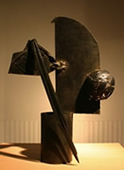 You could do a lot worse than the legacy of being the man who taught Picasso how to weld, but Julio Gonzalez deserves even more credit than that. Known as the “first master of the torch,” The Barecelona native is said to have liberated the aesthetic potential of welded iron in a way that encouraged many other artists to follow his lead. He did in fact teach Picasso how to weld, but he also helped Picasso to explore the cubist influence and go on to pursue his own sculptural work. Most of all, Gonzalez was instrumental in helping
You could do a lot worse than the legacy of being the man who taught Picasso how to weld, but Julio Gonzalez deserves even more credit than that. Known as the “first master of the torch,” The Barecelona native is said to have liberated the aesthetic potential of welded iron in a way that encouraged many other artists to follow his lead. He did in fact teach Picasso how to weld, but he also helped Picasso to explore the cubist influence and go on to pursue his own sculptural work. Most of all, Gonzalez was instrumental in helping 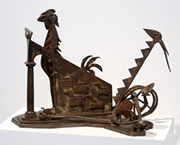 the art world accept metal sculpture as an artform rather than decorative ornamentation.
the art world accept metal sculpture as an artform rather than decorative ornamentation.
Sculptor David Smith first grew interested in welded metalsculpture when he saw Picassso’s work. After working in a locomotive factory during World War II, Smith was drawn to transforming found metal objects into sculpture so that their original function was lost in the total form. Working out of a machine shop on his farm in upstate New York, Smith’s originality was remarkable for his generation.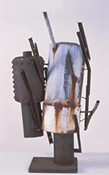
Richard Stankiewicz was called the “Audubon of junkyards” for the way he used humble materials to create lively and humorous amalgams -- sculptures verging on assemblages. His work shows the influence of Picasso as well as African tribal art, and while he may have been overshadowed by Pop and Conceptual Art, he was an important link to the modern art painters who followed him.
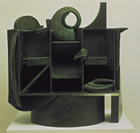 The Bristish sculptor, Sir Anthony Caro, came on the sculpture scene in the 1950s and pursued a monumental style of metal sculpture. Caro acknowledges a debt to both Gonzalez and Picasso, but it’s worth noting that he was an assistant to the great Henry Moore. He pioneered the movement to bring welded sculpture to earth, having it rest directly on the ground rather than sit on a plinth and he certainly has pushed the artform
The Bristish sculptor, Sir Anthony Caro, came on the sculpture scene in the 1950s and pursued a monumental style of metal sculpture. Caro acknowledges a debt to both Gonzalez and Picasso, but it’s worth noting that he was an assistant to the great Henry Moore. He pioneered the movement to bring welded sculpture to earth, having it rest directly on the ground rather than sit on a plinth and he certainly has pushed the artform 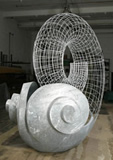 into more abstract directions.
into more abstract directions.
Jonathan Kirk thinks of himself as a formalist, someone who plays with form in the abstract. He draws his inspiration from the natural and organic world, but also is influenced by industrial and 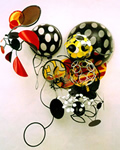 naval architecture. Part artist, part engineer, Kirk calls his scuptures stories without endings.
naval architecture. Part artist, part engineer, Kirk calls his scuptures stories without endings.
London born artist Judy Pfaff creates lush installations that are very organic in feeling. Pfaff works does not work from drawings or plans, but rather improvises on-site to create layered forms. The complex tangles of branches and vines are often juxtaposed with glass and light strips to create what some have described as art that is “dancing on the edge of chaos.”
Jay Harrison is a graphic designer and writer whose work can be seen at DesignConcept. He's written a mystery novel, which therefore makes him a pre-published author.
© 2006-2013 ConceptDesign, Inc. Terms of Use
BoomSpeak - For babyboomers - by babyboomers.